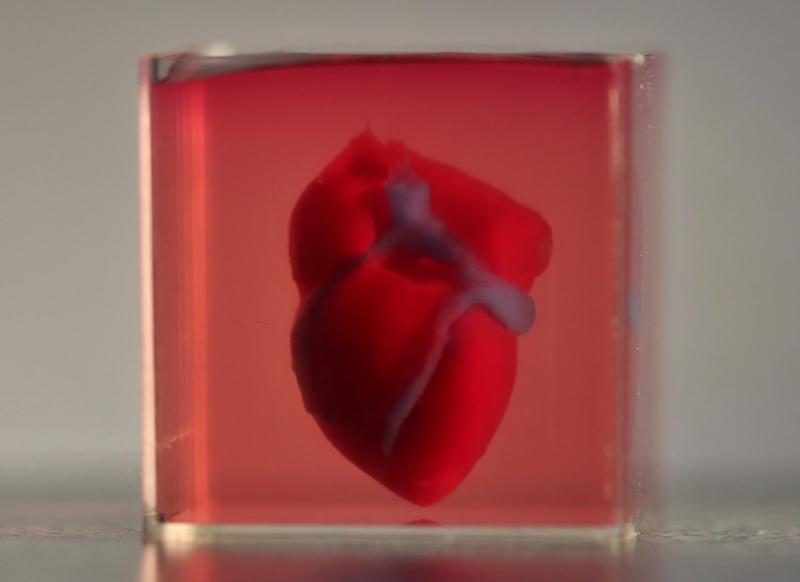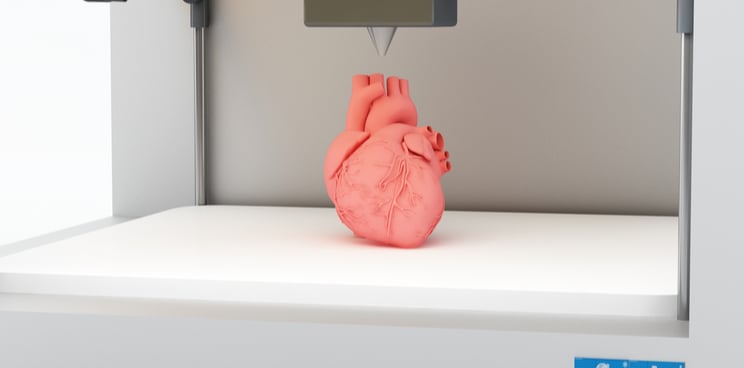A group of scientists in Israel is the first to 3D print a vascularized heart using reprogrammed cells and biological material from a donor. The technology could one day provide printed hearts for transplants with low risks of rejection by a patient’s immune system.
Organ bioprinting is a technique similar to 3D printing where you can print tissues out of ink made from cells and cell-friendly substances such as hydrogels. It has the potential to address a key problem in healthcare: shortages of organs for transplants.
However, there are major technical challenges for the field, such as how to construct tissue containing complex blood vessels, and how to make sure that the printed organs aren’t attacked by the patient’s immune system.
A group of researchers based at the American Friends of Tel Aviv University, Israel, has developed a 3D printed heart complete with a blood vessel system. The tissue was printed using fat tissue from a donor, as well as cells from the tissue that were cultured and reprogrammed into heart cells.
“This is the first time anyone anywhere has successfully engineered and printed an entire heart replete with cells, blood vessels, ventricles and chambers,” Tal Dvir, a researcher leading the group, stated.

Bioprinting a transplant organ from a patient’s own tissues reduces the likelihood that the patient’s immune system rejects it. The group also personalized the heart to the donor by basing its structure on medical images of the donor patient’s heart.
Published in Advanced Science, the technology is still in its early stages. The heart that the group printed is the size of a rabbit’s heart, and the cardiac cells aren’t yet able to work together to pump blood. Once these technical aspects are worked out, the group plans to test the printed hearts in animals.
“I hope that we will see the technology in practice in the future, but we need to remember that it is in its infancy and a great deal of R&D needs to be devoted to it,” Assaf Shapira, one of the scientists involved in the work, told me.
Bioprinting hearts is not the only application for this technology. Other tissues could be similarly printed. Technology developed by the Swedish company Cellink was used to bioprint corneas in just ten minutes. Spanish scientists were also able to print human skin that could one day be used to treat patients with severe burns. However, the same technical challenges apply to this technology before it can reach the clinic, such as vascularization, and making the tissue fully functional.
Tissue bioprinting also has a big potential in creating disease models for testing drugs and other treatments. For example, the French company L’Oreal is developing technology to bioprint human skin as a cosmetics testing tool. The UK company Engitix takes tissue from donated organs and makes it into tumor models for companies to test drugs.
Images from Shutterstock and Noor et al.





